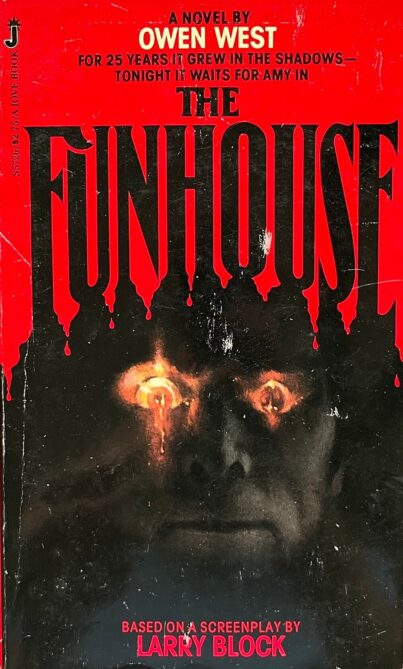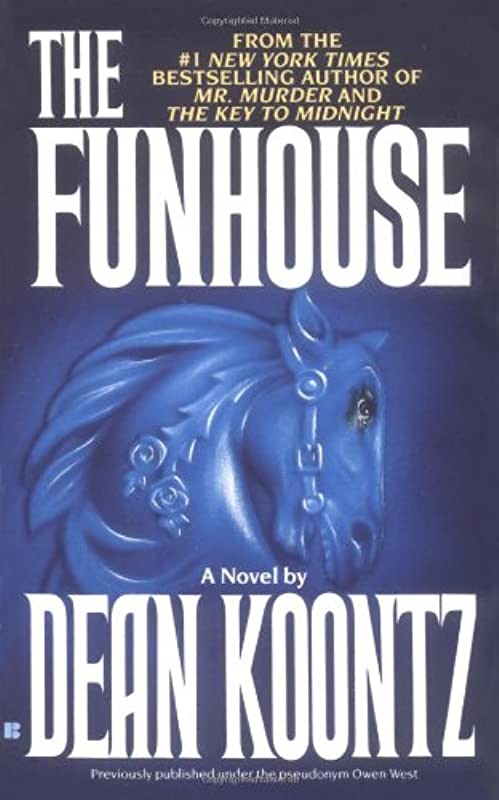 By DEAN KOONTZ (Jove/Berkley; 1980/94)
By DEAN KOONTZ (Jove/Berkley; 1980/94)
From Dean Koontz, a movie novelization (initially published under the pseudonym Owen West), that’s not one of his better novels. It is valuable, though, as an especially outré example of what a creative author can do with this most limited of formats.
THE FUNHOUSE was a 1981 movie directed by the late Tobe Hooper that’s not exactly notable for its story, which involves horny teenagers stuck in a carnival funhouse with a maniac on the loose. Koontz, at the time a struggling novelist who had yet to break out commercially (that breakout would occur, ironically enough, with the paperback edition of WHISPERS, which was also published in 1980), broadened the story exponentially, transforming a single night slasher into a decades-spanning epic with an opening 180 pages that Koontz created entirely himself.
As it happened, the flick’s release was pushed back, with the novel beating it to the market by three months. This worked to the book’s advantage, as it became a bestseller, only to have sales drop off abruptly when the poorly reviewed film, which should have acted as a spur, finally appeared; as Koontz lamented, “Instead of serving as an advertisement for the book, the film acted as a curse upon it.”
Koontz’s additions to the script begin with Conrad Straker, a Satan worshipping carnival pitchman, despairing when his wife Ellen kills their hideously deformed child. Conrad banishes Ellen from his life and sires Gunther, another deformed child, with a carny fortune teller.
Ellen for her part becomes a devout Catholic and births two children: Amy and Joey. This brings us to the point at which THE FUNHOUSE screenplay begins, with Amy a naïve teenager and Joey a horror-obsessed youngster who dreams of running away and joining the circus. An opportunity is offered by Straker’s carnival, which Amy attends one night with some friends, just as Joey attempts to join it. Straker awaits them with a diabolical plan: “He would urge Gunther to torture them for several days, use them sexually again and again, no matter if they were boys or girls, and then, only then, tear them apart.”
with some friends, just as Joey attempts to join it. Straker awaits them with a diabolical plan: “He would urge Gunther to torture them for several days, use them sexually again and again, no matter if they were boys or girls, and then, only then, tear them apart.”
Koontz only pays cursory attention to the events of the film, omitting its PSYCHO-inspired opening sequence and also its not-entirely-happy ending. Koontz had far more grandiose concerns, resulting in a dramatic last-minute rescue and an intercession by a (much) higher power.
There’s also a newly written afterward in which Koontz essentially apologizes for writing the book (“To be truthful, I was also motivated by the financial terms, which were far more generous than what I was receiving for my own novels”) and explains how he utilized his knowledge of actual carnival lore. That doesn’t make this a particularly good book, Koontz’s efforts having been severely limited by the cynical slasher script from which he constructed the novel, but it is a definite page-turner.
